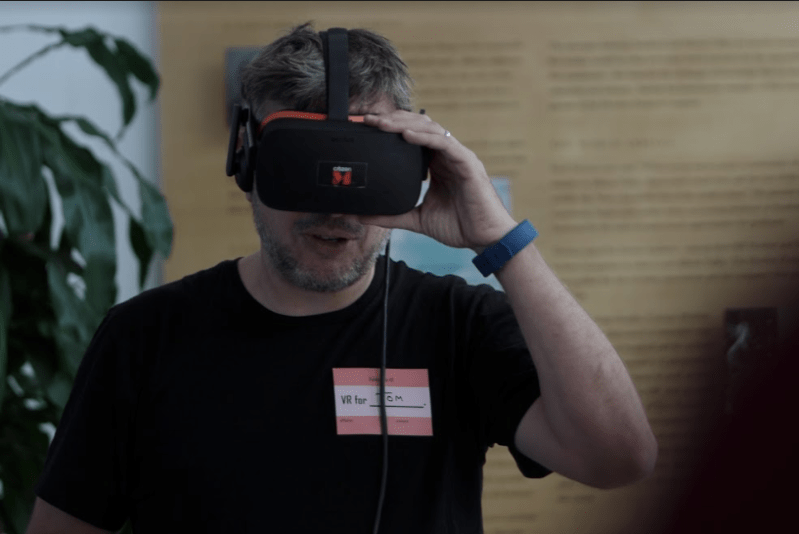On May 12, Rabbit Hole VR, Stanford’s VR club, hosted its first VR conference. From the demographic of attendees alone, it was clear this year’s event was truly “VR 4 Everyone” — high school students and locals had a strong presence and programming touched on inclusion in the augmented and virtual reality space. While VR/AR conferences typically cost hundreds of dollars, VR 4 Everyone hosted an immersive media conference for free, attracting hundreds of visitors.
Rabbit Hole VR, Stanford’s virtual reality club founded in 2015, believes that immersive media represents a paradigm shift in how we will learn, socialize and experience life. Their Sunday hangouts, advertisement of relevant job and research opportunities and reading groups aim to encourage a diversity of contributions to this shift. The VR 4 Everyone conference emerged from the realization that the VR/AR developer community on campus was relatively small, although interest was high. Khoi Le (‘20), Rabbit Hole VR Corporate Outreach Director, explains “[individuals] don’t have enough exposure.” VR 4 Everyone provides the understanding and perspective needed to propel students from initial excitement to inspired development. Le mentioned applications in other communities in which he could immediately spot a need, such as the Graduate School of Business looking for educational VR training and medical school students looking for a three-dimensional model of scans.
At the event, company demonstrations of products certainly broadened my understanding of VR/AR’s relevance. An education company Virtimed helps train medical students to perform under pressure by simulating emergencies, giving professionals more confidence and providing patients with greater access to effective treatment. Another example is Where Thoughts Go, a virtual networking platform developed by Lucas Rizzotto. In this digital space, visitors leave anonymous voice messages, sharing their fears and hopes. The visuals create a safe atmosphere for personal questions to be answered and empathy to be developed. The musings of others are stored in orbs which wander the space for visitors to precariously watch. Personal connections are developed between human experiences we will never be able to put a name to, transcending the very individualistic nature of social media today. This platform encourages the sharing of experiences that does not carry the undercurrent building self-image or personal branding, but rather presents an opportunity to share and dwell in vulnerability. Anyone can contribute and incite thoughtful questioning, not just the creators of the platform. Unlike typical VR games, users do not merely consume an imposed narrative, they can become the core of another’s experience.
The most popular event of the day was keynote speaker Jeremy Bailenson, the founding director of Stanford University’s Virtual Human Interaction Lab and Thomas More Storke Professor in the Department of Communication. He spoke of VR as a world of “firsts,” an opportunity to engage in experiences outside our own. Even though we can all recognize these experiences exist in a virtual world, Bailenson notes that VR blurs reality. Thus, we could simulate anything from dying in Moscow by falling on a glass plate, to simulating new identities, experiencing prejudice and discrimination and diversifying tolerance to pain. He suggested that VR can also be used to increase incentives. For example, a 3D model of your aged self may evolve with every financial decision you make, forcing the present to be confronted with the future. Other speakers at the event included HTC executive Pearly Chen and Digi-Capital managing director Tim Merel.
VR 4 Everyone was focused on hearing from industry leaders and showcasing demos to excite students about the potential and accessibility of VR/AR. The event was one step among many for greater inclusion. Rabbit Hole VR recently moved into the Roble Arts Gym, encouraging collaboration and creative applications with practicing artists on campus. Le emphasizes, “the 3D nature of VR really unlocks experiences, and we need people to be able to create those experiences.”
Learn more about Rabbit Hole VR at rabbitholevr.org.
Contact Chloe Barreau at chloeb88 ‘at’ stanford.edu.
